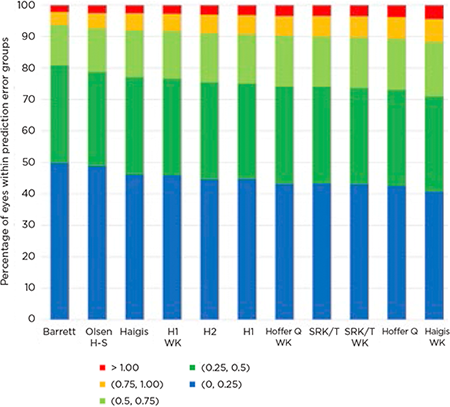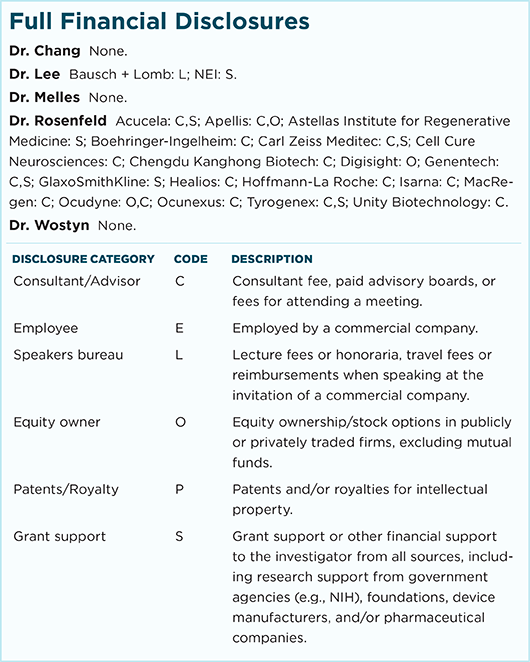Download PDF
For 2 widely used intraocular lens (IOL) models, cataract surgeons can attain the lowest levels of refractive prediction error with the Barrett Universal II formula, an analysis of 18,501 cases has found.1
“We found that the Barrett was the most accurate across all eyes,” said Ronald B. Melles, MD, at Kaiser Permanente in Redwood City, California.
Study specifics. To conduct the study, the researchers used data from 18 months of consecutive procedures performed in the Kaiser Permanente Northern California region. In roughly two-thirds of the cases (n = 13,301), patients received an SN60WF IOL (AcrySof IQ, Alcon) in 1 eye; for the remainder (n = 5,200), an SA60AT IOL (AcrySof Natural, Alcon) was implanted (again, in 1 eye). These 2 IOLs are the most commonly used IOLs at their institution, the researchers noted.
The 145 surgeons involved used standardized preoperative and surgical protocols and a single type of biometer (Lenstar 900, Haag-Streit). They then applied 11 IOL power formulas to the preoperative measurements in each case for the purposes of calculating spherical equivalent formula predictions and comparing the accuracy of the predictions after lens constant optimization.
 |
OUTCOMES. This stacked histogram compares the percentage of cases within a given diopter range of predicted spherical equivalent refraction outcome for selected formulas and the AcrySof IQ IOL. (H1 = Holladay 1; H2 = Holladay 2; H-S = Haag-Streit; WK = Wang–Koch.)
|
Prediction errors. The analyses revealed that, between axial lengths of 23 to 25 mm, most of the formulas yielded results within 0.1 D of predicted spherical equivalent. However, as axial length, keratometry, anterior chamber depth, and lens thickness varied, most formulas had “notable biases” in their prediction errors, the authors reported. For instance:
- the SRK/T formula was the most affected in eyes with flat or steep keratometry;
- with the Hoffer Q and Olsen formulas, there was significant bias with varying anterior chamber depth;
- the Haigis formula was most affected by variations in lens thickness; and
- the Wang–Koch modification of axial length for long eyes overcorrected some eyes, leading to myopic errors.
What about other IOLs? The authors cautioned that their findings might not be generalizable to other IOLs, as the lenses used in this study have the same design (anterior asymmetric biconvex) and are from the same manufacturer.
“But as these are 2 of the most commonly used IOLs in the United States, this is definitely relevant to people outside our organization,” said coauthor William J. Chang, MD, also at the Redwood City Kaiser Permanente. “If we can guide [our colleagues] by saying the Barrett II does seem to be the best for these 2 lenses, it would simplify their lives as surgeons.”
—Linda Roach
___________________________
1 Melles RB et al. Ophthalmology. Published online Sept. 23, 2017.
___________________________
Relevant financial disclosures—Drs. Chang and Melles: None.
For full disclosures and disclosure key, see below.

More from this month’s News in Review